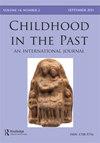建筑实用主义与诗歌:法西斯时代夏令营中的童年
IF 0.5
Q3 ANTHROPOLOGY
引用次数: 0
摘要
摘要在意大利法西斯统治期间(1922–43),该政权赞助并鼓励建造数千个儿童夏令营或殖民地(单数殖民地),作为塑造该国最年轻公民身心的使命的一部分。尽管殖民地建筑类型起源于19世纪,但该政权根据其目标调整了建筑类型,并在意大利各地建造了数千个新营地,从阿尔卑斯山到河流、湖泊和海洋的海岸线。有些很小,只不过是基本的避难所;其他的则类似于小城市。许多人以其简洁的线条、深刻的概念手势以及培养雄伟非凡的童年体验而闻名。本文分析了Cesenatico、Cattolica和Legnano三位殖民者,以了解该政权创造未来法西斯的愿望是如何被一批年轻建筑师转化为建筑形式的。本文章由计算机程序翻译,如有差异,请以英文原文为准。
Architectural Pragmatism and Poetry: Childhood in Fascist Era Summer Camps
ABSTRACT During the Fascist rule in Italy (1922–43), the regime sponsored and encouraged the construction of thousands of children’s summer camps or colonie (singular colonia) as part of a mission to shape the physical bodies and minds of the youngest citizens of the nation. Although the colonia building type originated in the nineteenth century, the regime adapted the type to their aims and constructed thousands of new camps throughout Italy, from the Alps to the shorelines of rivers, lakes, and seas. Some were tiny, no more than basic shelters; others resembled small cities. Many are known for their simple lines, profound conceptual gestures, and for fostering majestic and remarkable childhood experiences. This paper analyses three colonie, in Cesenatico, Cattolica, and Legnano, to understand how the regime’s desire to create the Fascists of the future was translated into built form(s) by an array of young architects.
求助全文
通过发布文献求助,成功后即可免费获取论文全文。
去求助
来源期刊

Childhood in the Past
Social Sciences-Anthropology
CiteScore
0.90
自引率
0.00%
发文量
16
期刊介绍:
Childhood in the Past provides a peer-reviewed, interdisciplinary, international forum for the publication of research into all aspects of children and childhood in the past, which transcends conventional intellectual, disciplinary, geographical and chronological boundaries. The editor welcomes offers of papers from any field of study which can further knowledge and understanding of the nature and experience of childhood in the past.
 求助内容:
求助内容: 应助结果提醒方式:
应助结果提醒方式:


